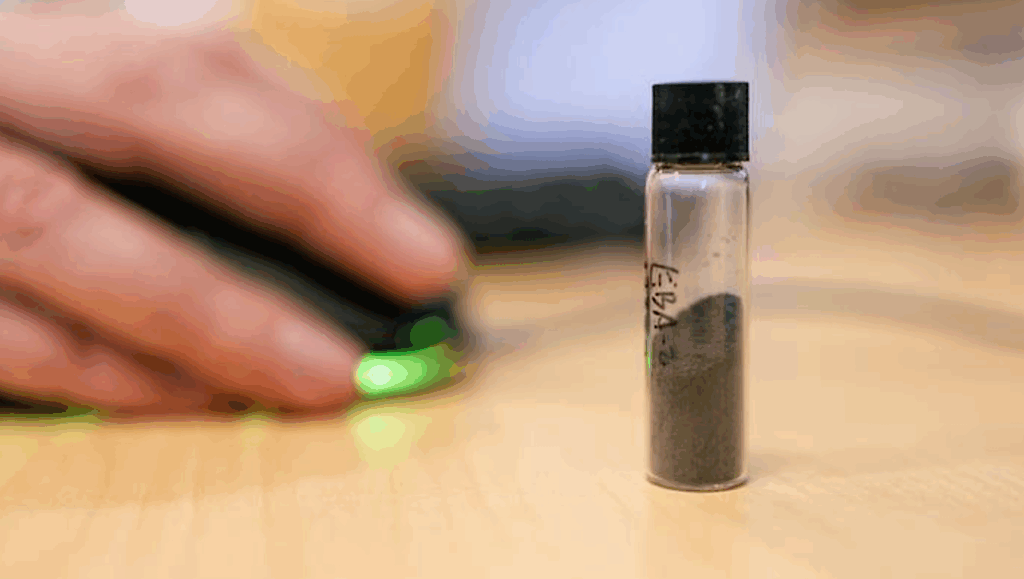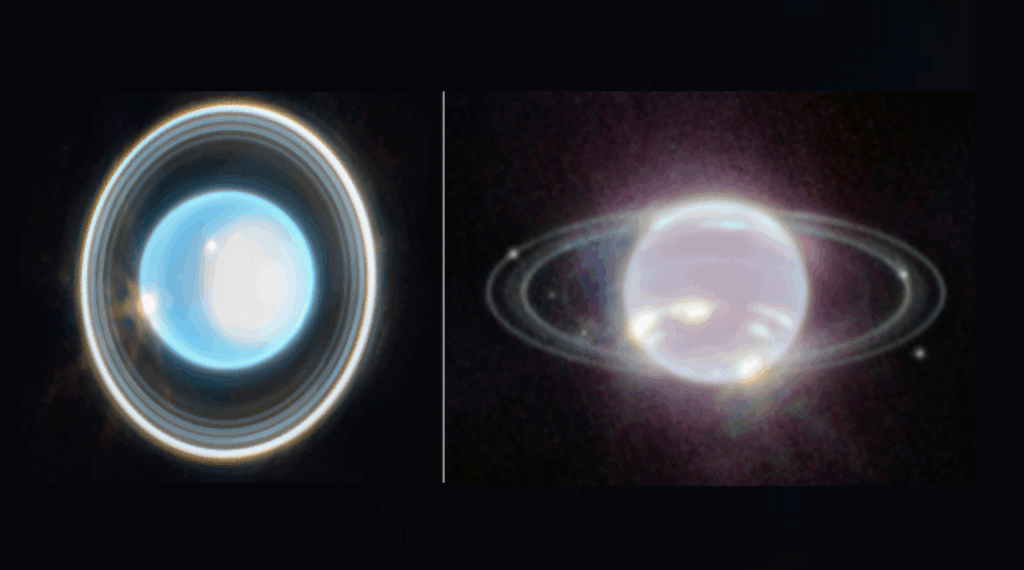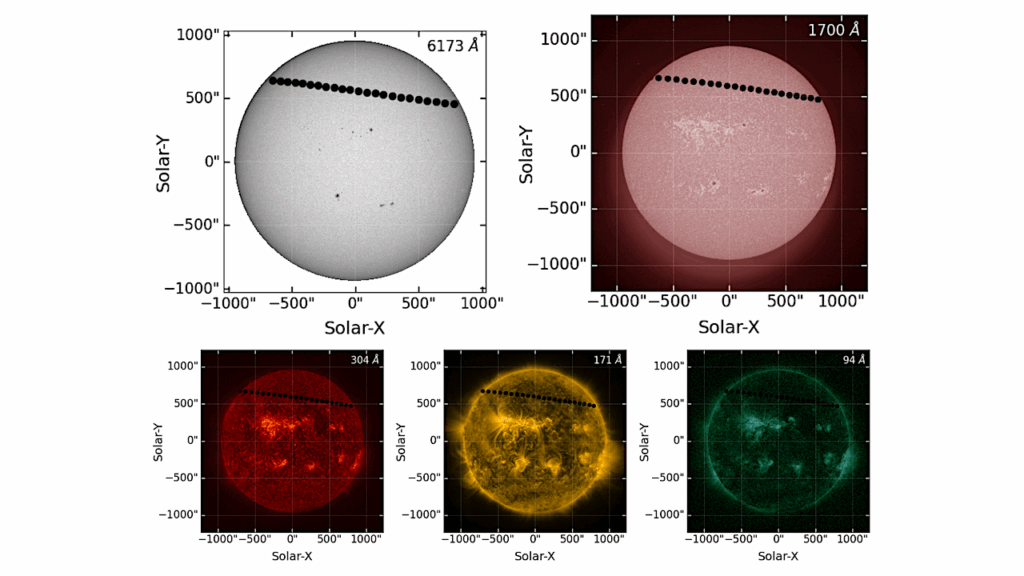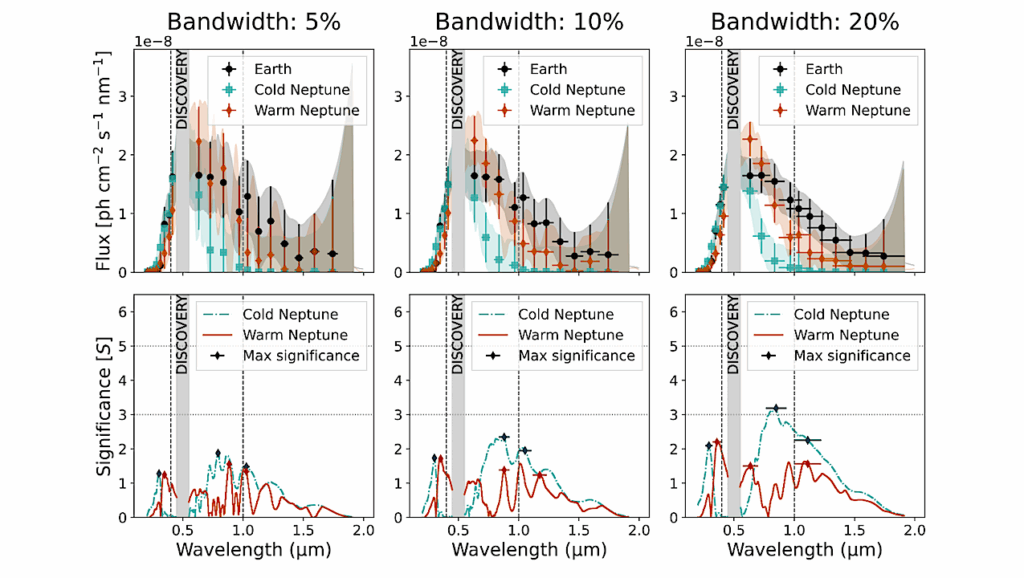Characterizing The Current Systems In The Martian Ionosphere
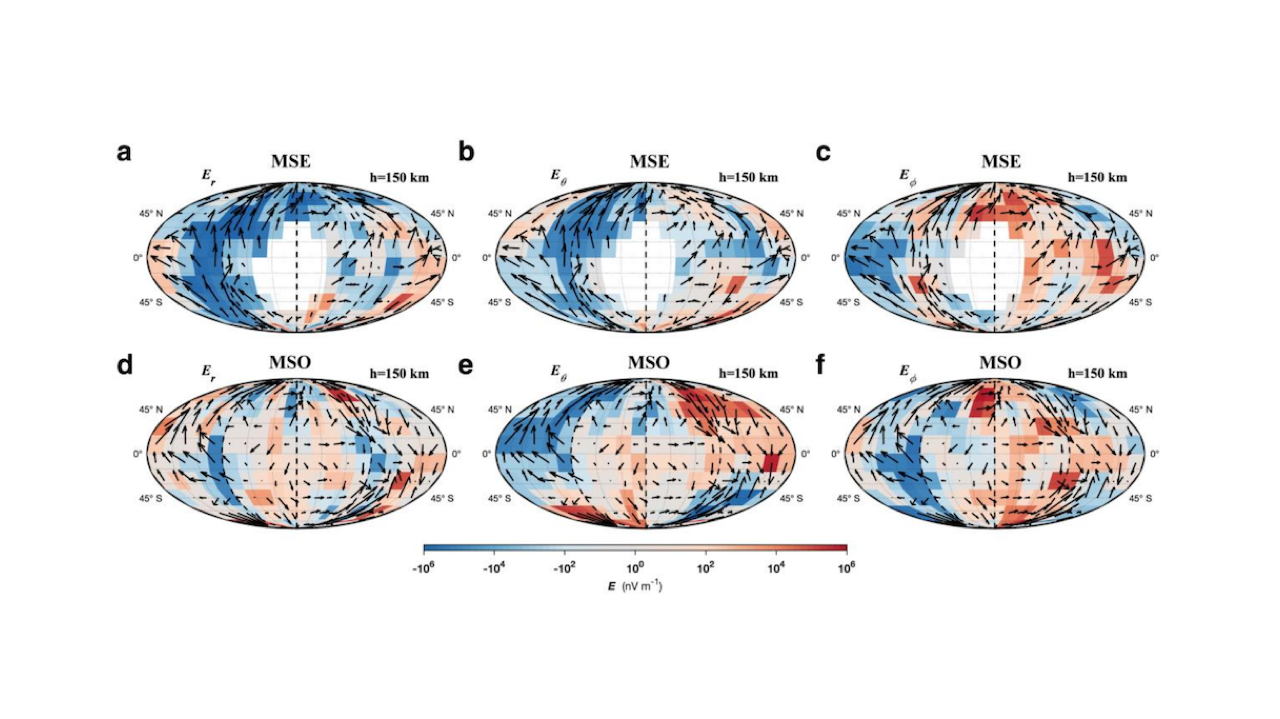
When the solar wind interacts with the ionosphere of an unmagnetized planet, it induces currents that form an induced magnetosphere. These currents and their associated magnetic fields play a pivotal role in controlling the movement of charged particles, which is essential for understanding the escape of planetary ions.
Unlike the well-documented magnetospheric current systems, the ionospheric current systems on unmagnetized planets remain less understood, which constrains the quantification of electrodynamic energy transfer from stars to these planets. Here, utilizing eight years of data from the Mars Atmosphere and Volatile EvolutioN (MAVEN) mission, we investigate the global distribution of ionospheric currents on Mars.
We have identified two distinct current systems in the ionosphere: one aligns with the solar wind electric field yet exhibits hemispheric asymmetry perpendicular to the electric field direction; the other corresponds to the flow pattern of annually-averaged neutral winds. We propose that these two current systems are driven by the solar wind and atmospheric neutral winds, respectively.
Our findings reveal that Martian ionospheric dynamics are influenced by the neutral winds from below and the solar wind from above, highlighting the complex and intriguing nature of current systems on unmagnetized planets.
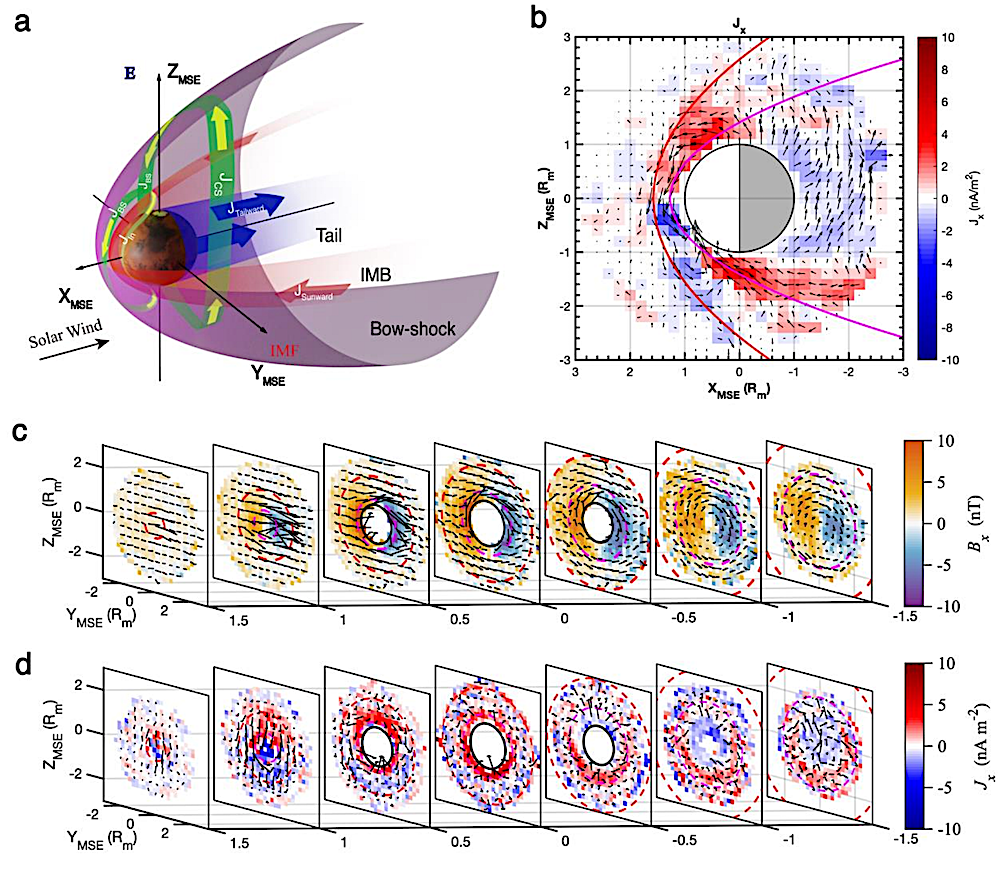
Illustration of the current systems in the induced magnetosphere of Mars. (a) Diagram of the current systems in the induced magnetosphere. The magnetopause and magnetotail current system are colored green, with the yellow arrows indicating the current direction. This current pattern consists of the bow-shock current (𝐽𝐵𝑆), the magnetotail current sheet current (𝐽𝐶𝑆), the sunward/tailward currents (𝐽𝑆𝑢𝑛𝑤𝑎𝑟𝑑 /𝐽𝑇𝑎𝑖𝑙𝑤𝑎𝑟𝑑), and the ionospheric induced currents (𝐽𝐼𝑛). For Confidential manuscript submitted to Nature Communications clarity, the currents at the induced magnetospheric boundary that connect with the 𝐽𝐼𝑛 and 𝐽𝐶𝑆 are not shown. (b) The current distribution in the 𝑋𝑍𝑀𝑆𝐸 plane, through the meridian plane with a thickness of 0.2 𝑅𝑚, centered at 𝑌𝑀𝑆𝐸 = 0. (c-d) Magnetic field (c) and current (d) slice maps in 𝑌𝑍𝑀𝑆𝐸 plane along 𝑋𝑀𝑆𝐸 direction. In each slice, arrows represent the direction of magnetic field (c) and current (d) in the 𝑌𝑍𝑀𝑆𝐸 plane. The red and magenta dashed lines denote the shape of the bow shock and the induced magnetosphere boundary97. The black circle denotes the body of Mars. — astro-ph.EP
Jiawei Gao, Shibang Li, Anna Mittelholz, Zhaojin Rong, Moa Persson, Zhen Shi, Haoyu Lu, Chi Zhang, Xiaodong Wang, Chuanfei Dong, Lucy Klinger, Jun Cui, Yong Wei, Yongxin Pan
Comments: 20 pages, 6 figures
Subjects: Earth and Planetary Astrophysics (astro-ph.EP); Space Physics (physics.space-ph)
Cite as: arXiv:2408.03075 [astro-ph.EP] (or arXiv:2408.03075v1 [astro-ph.EP] for this version)
Submission history
From: Jiawei Gao
[v1] Tue, 6 Aug 2024 10:04:14 UTC (1,608 KB)
https://arxiv.org/abs/2408.03075
Astrobiology,



